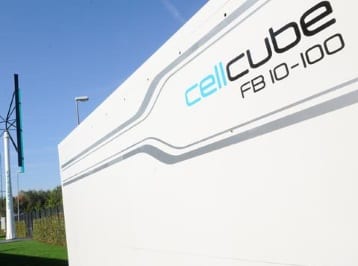VSUN Energy, the storage offshoot of mining group Australian Vanadium, says it is now looking to the household market for its vanadium redox flow batteries and is also looking at a local manufacturing facility.
 In yet another sign of the increased competition in the Australian energy storage market, VSUN on Thursday said it had received more than 80 unsolicited requests for domestic storage devices, even though it had previously focused on larger systems in the commercial and industrial sector.
In yet another sign of the increased competition in the Australian energy storage market, VSUN on Thursday said it had received more than 80 unsolicited requests for domestic storage devices, even though it had previously focused on larger systems in the commercial and industrial sector.
Until now its smallest product was a 10kW/100kWh battery useful for farms and industrial premises and the like, but it says it is now looking at a 5kW, 20kWh system suitable for homes.
“I just installed solar on my house, 5kW that is generating an average 20kWh from my system, I’m using about 10kWh and the rest I am sending back to Western Power at 7c/kWh,” managing director Vincent Algar told RenewEconomy. “If I can have a few hours of storage of 5kW, that should cover my needs.”
VSUN Energy says vanadium batteries are attractive because of their ability to store large amounts of energy, their 20 year lifespan, a very high cycle performance, minimal degradation, and are considered safe and non-flammable..
The company says it is currently finalising initial market reviews and partner discussions and will then undertake a feasibility study into developing a residential VRB product in Australia, and to establish a local manufacturing facility, adding casing, pipes and pumps to the vanadium stacks produced by Gildemeister.
Local manufacturing will also reduce the cost of transportation and therefore the cost of batteries to Australian customers.
“Home owners are looking for a battery which offers enough hours of storage to safely carry them through their overnight power requirements,” Algar says. “We want to be part of that delivery through VSUN Energy. It’s a fertile market.”
The company is also looking at a commercial electrolyte plant, which would enable VSUN Energy to source vanadium electrolyte locally and at a competitive price. Vanadium electrolyte is a key component of VRBs.
Algar also said VSUN had submitted expressions of interest to the battery storage tender called by South Australia, and to both tenders being conducted by the Victorian government. Algar says VSUN was focused on smaller, distributed installations of up to 25MWh rather than one installation of 100MWh.
This article was originally published on RenewEconomy’s sister site, One Step Off The Grid, which focuses on customer experience and ambitions with distributed generation. To sign up to One Step’s free weekly newsletter, please click here.










